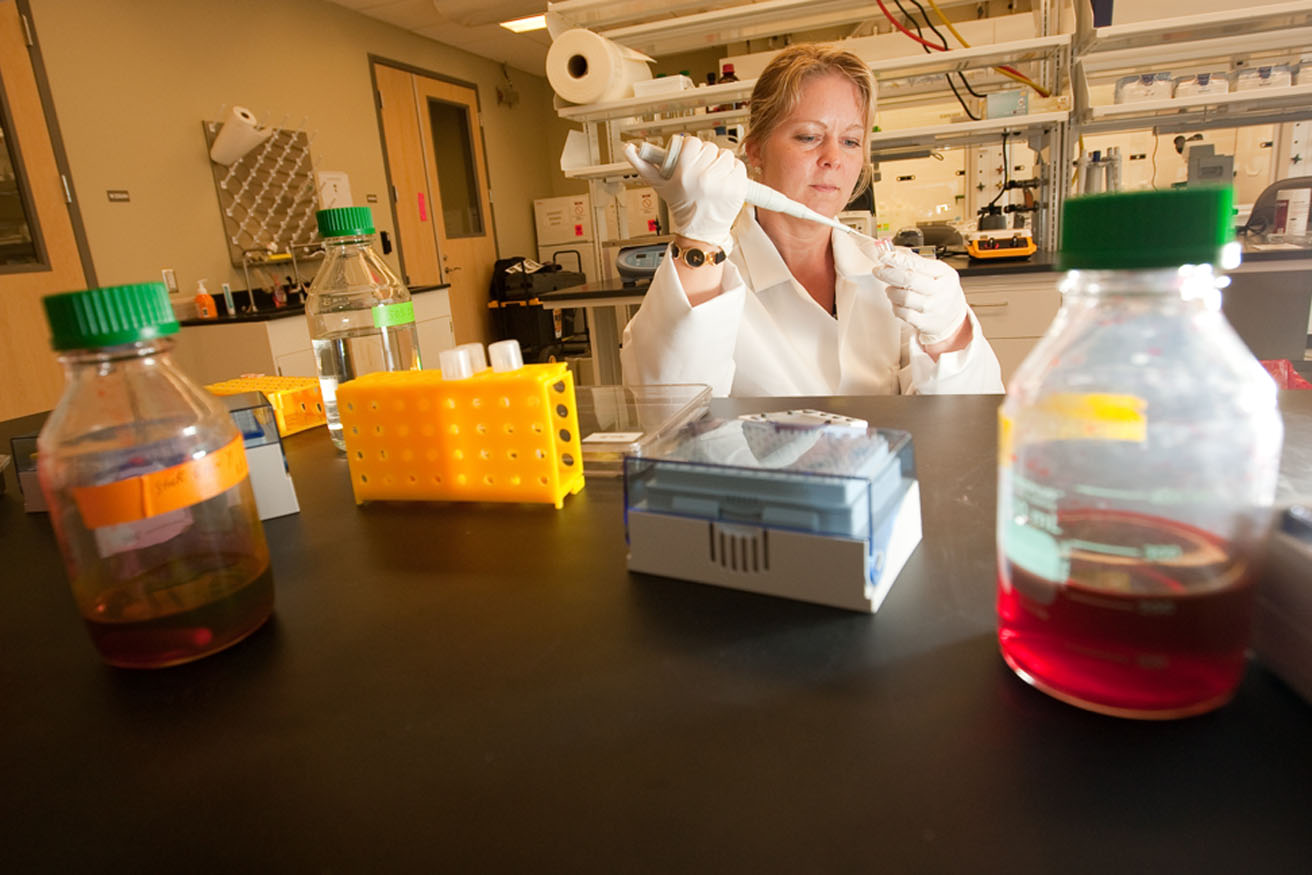Two Studies on Estrogen Hormones Published in Molecular Endocrinology

In two separate, yet related, studies published in the June and August issues of the journal Molecular Endocrinology, professor Cecilia Williams and her team at the Center for Nuclear Receptors and Cell Signaling (CNRCS) explored the role of estrogen hormones in potentially treating and preventing these cancers. More specifically, Williams examined regulatory molecules called estrogen receptors (ER), which are the tools that allow estrogen and related molecules to act in the cell.
Although estrogen is a female hormone, both men and women have receptors that are activated by estrogen. There are two types of estrogen receptors, ERalpha and ERbeta. ERalpha activity is associated with inducing breast cancer in women, whereas ERbeta is hypothesized to help prevent colon cancer.
In the first study, featured on the June cover of the journal Molecular Endocrinology, Williams and her team focused on the impact of ERbeta on colorectal cancer cells in cultures, called cell lines, to see how estrogen hormones could be used to prevent colon cancer. For each cell line, the researchers introduced this estrogen receptor to allow them to study its activity in the colon cancer cells. They found an association between the expression of ERbeta and tumor-fighting characteristics of the cells and identified the presence of several proteins involved in the protective interactions.
“Through our research, we found that the presence of estrogen receptor beta not only slowed the growth of colorectal cancer cells, but they also helped to protect against further development of the cancer,” Williams said. “Our work demonstrates the potential of novel hormone compounds that activate this estrogen receptor to become possible new colon cancer preventive treatments.”
In the second study, the team worked with the other estrogen receptor, ERalpha, to learn more about the mechanism by which estrogen induces growth of breast cancer tumor cells. The team identified the gene KCNK5, a potassium channel regulator found in tissues that controls a wide variety of cell functions, as a key gene involved in this growth. They showed that KCNK5 was stimulated by the activation of the estrogen receptors in breast cancer cell lines and is required for tumor cell growth. With this new knowledge, the researchers confirmed the potential of KCNK5 as a target for breast cancer therapeutics.
“Building on our colon cancer research reported in the June issue, we examined the influence of estrogen on gene expression as a way of targeting and treating breast cancer tumor cells,” Williams said. “The results of our research will open new opportunities for treating cancer with novel compounds, such as hormone therapy, which add, block or specifically activate only one of the two receptors in the body to combat the growth of cancer cells.”
Williams’ collaborators included CNRCS director Jan-Åke Gustafsson, UH biology and biochemistry professor Stuart Dryer, research assistant professors Anders Ström and Christoforos Thomas, and graduate students Karin Edvardsson, Claudia Alvarez-Baron and Philip Jonsson. The research was funded in part with a grant from the Texas Emerging Technology Fund, as well as grants from the Lars Hierta Memorial Foundation, the Magnus Bergvall Foundation, the Swedish Cancer Society and the Robert A. Welch Foundation.
Molecular Endocrinology provides a forum for papers devoted to describing molecular mechanisms by which hormones and related compounds, like receptors, regulate function. To read an abstract of the June cover story titled “Estrogen Receptor {beta} Induces Anti-inflammatory and Antitumorigenic Networks in Colon Cancer Cells,” visit http://mend.endojournals.org/cgi/content/abstract/me.2010-0452v1. For the August abstract titled “The Two-Pore Domain Potassium Channel KCNK5: Induction by Estrogen Receptor {alpha} and Role in Proliferation of Breast Cancer Cells,” visit http://mend.endojournals.org/content/25/8/1326.abstract.
- Lisa Merkl, University Communication